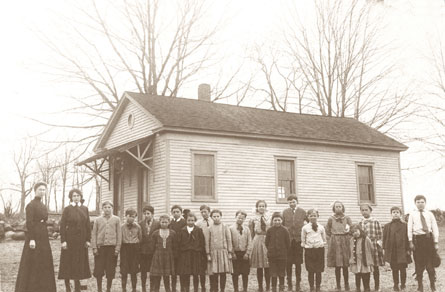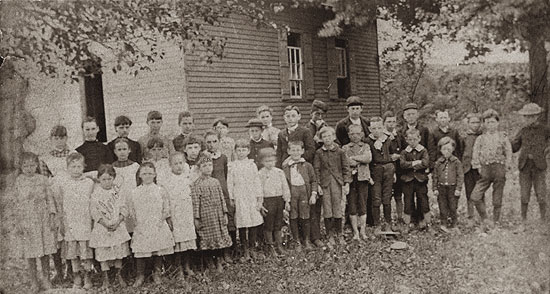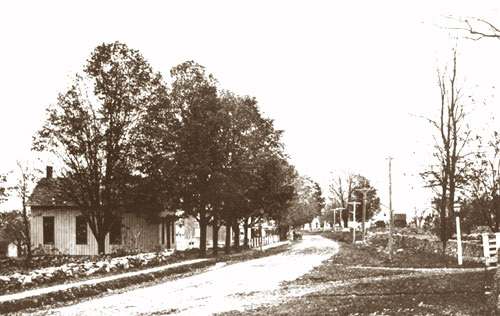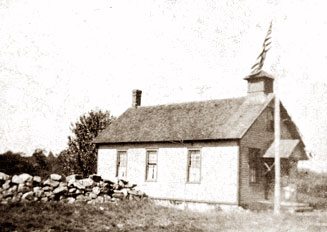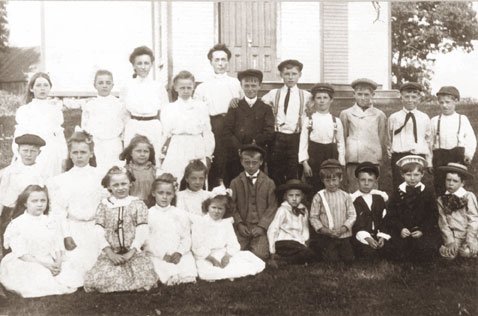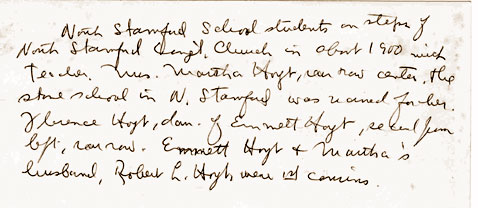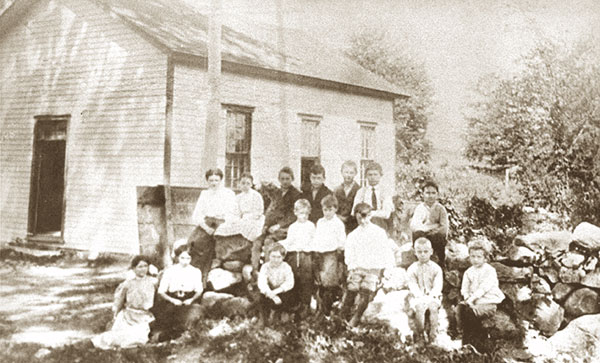Stamford had quite a few one-room schoolhouses, and we have photos of several of them.
The Bicentennial Commemorative Publication “Stamford Past & Present, 1641–1976” has a chapter by Marie Updegraff about early education in Connecticut and Stamford in particular, titled Education Spelled Freedom. Below are excerpts referring to one-room schoolhouses in Stamford. It's worthwhile reading the entire chapter!
“In October, 1685, the town voted to heat the school: “The town appoint ye schoolhouse to be fitted with a stone chimney and all other ways comfortably fitted for use of ye school.” In what other ways it was “comfortably fitted” are not known and somewhat difficult to imagine. At any rate, five years later the town decided it needed a larger school, and the little building was sold to Stephen Bishop for twenty shillings and sixpence
“On April 2, 1798, the eighty-one property owners in Stamford's First School District were invited to a meeting to discuss building a new school. John Davenport, Justice of the Peace, served as “moderator.” Those present voted a tax of four cents on the dollar on the 1797 property list in the First District to construct a school- house “a little westerly from the spot where the former schoolhouse stood.” What happened to the former schoolhouse—which First District children probably attended during the Revolution—is not known. Perhaps it burned down. It was located in the vicinity of the original one-room schoolhouse.
“By 1802, Stamford had seven school districts: the First; West of the (Mill) River; Smith's (northwestern section bordering the Stanwich line); Roxbury; Hoyt's (northern High Ridge section); Simsbury (southern High Ridge section); and Holmes (Glenbrook-Noroton section).
“By 1870, Stamford had fourteen schools and, in addition, shared five school districts with neighboring communities. The Stamford schools included the graded Centre School; the Green School (in the Meadow Street-Canal Street section since wiped out by the Connecticut Turnpike); West Stamford (Richmond Hill section); Bangall; Roxbury; Simsbury; Cove; Turn of River; Scofieldtown; North Stamford; High Ridge; Hunting Ridge; Long Ridge, and Farms (on Riverbank Road). The joint districts were Hope Street, Holmes, New Canaan, Banksville and Stanwich.
“Eight of the sturdy little one-room schoolhouses in the northern part of Stamford remain today, but they probably would not be recognized as such. One-room Roxbury School, masquerading as a real estate office, stands on its original wedge of hill at Roxbury and Long Ridge roads. Scofieldtown School is the dining room and kitchen of a home at 263 Brookdale Road, where it was moved from nearby Scofieldtown Road.
“Farms School stayed in place at 942 Riverbank Road near Farms Road and became the living room of a home. Hunting Ridge School was sold at public auction in 1945 and moved to 42 Dannell Drive, where it serves as two bedrooms and the living room of a house. Turn of River School was moved in the 1920's a few hundred yards south to 69 Turn of River Road and made into a two-bedroom house with kitchen, bath, and combination living-dining room.
“The North Stamford School was moved across Cascade Road to become the Guild House of the North Stamford Congregational Church. High Ridge School forms the center section of McLaughlin Hall next to the Ridges Methodist Church on High Ridge Road. After the pupils of the High Ridge, North Stamford, Roxbury and Turn of River one-room schools were transferred in 1914 to the new Martha Hoyt School on High Ridge Road, the city donated the little High Ridge School to the Methodist Church. Last of the one-room schools to close was Bangall, at Roxbury and Westover roads. School kept there until June, 1949. The only one of the small structures still used as a school, it holds the Sunday School rooms of the attached Friends' Meeting House.”
